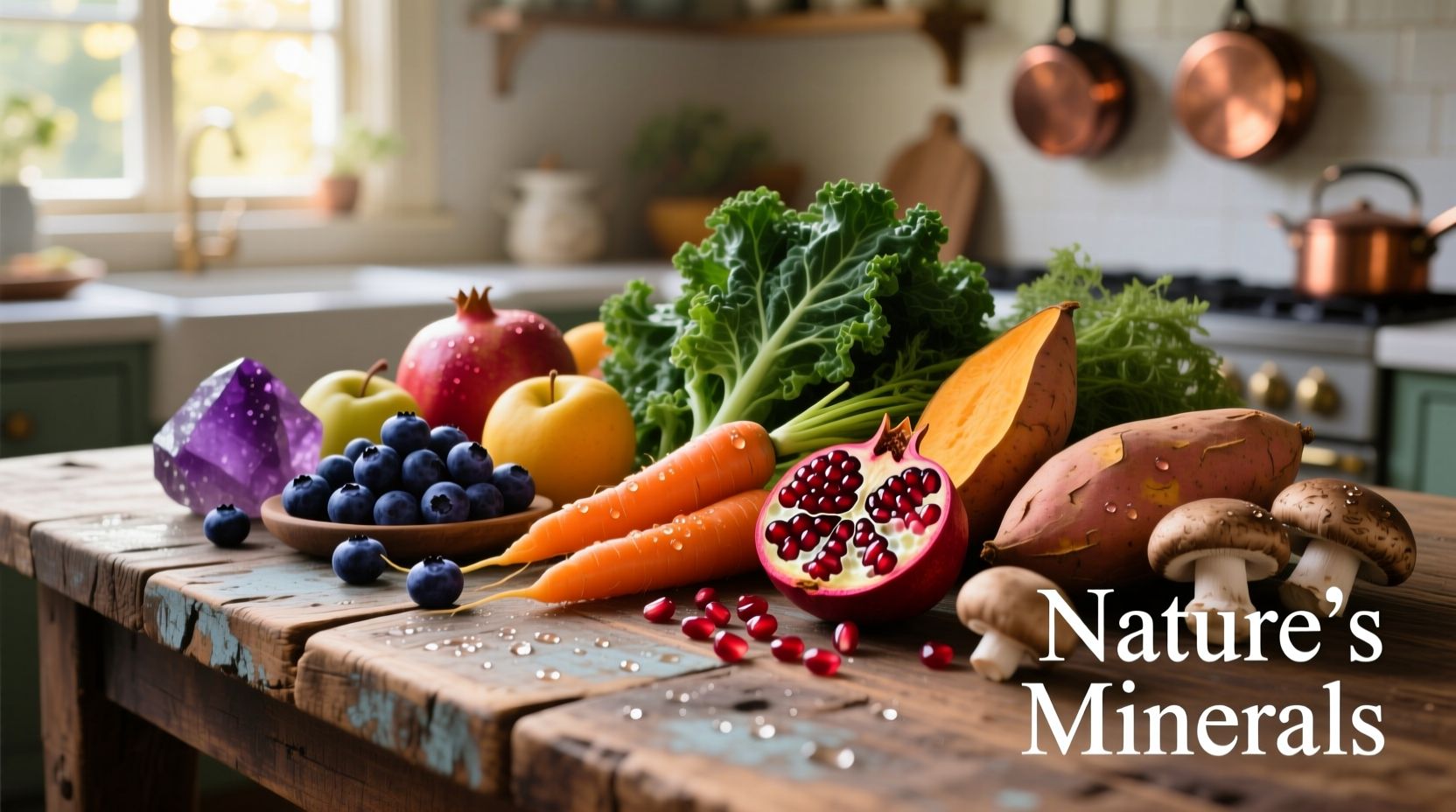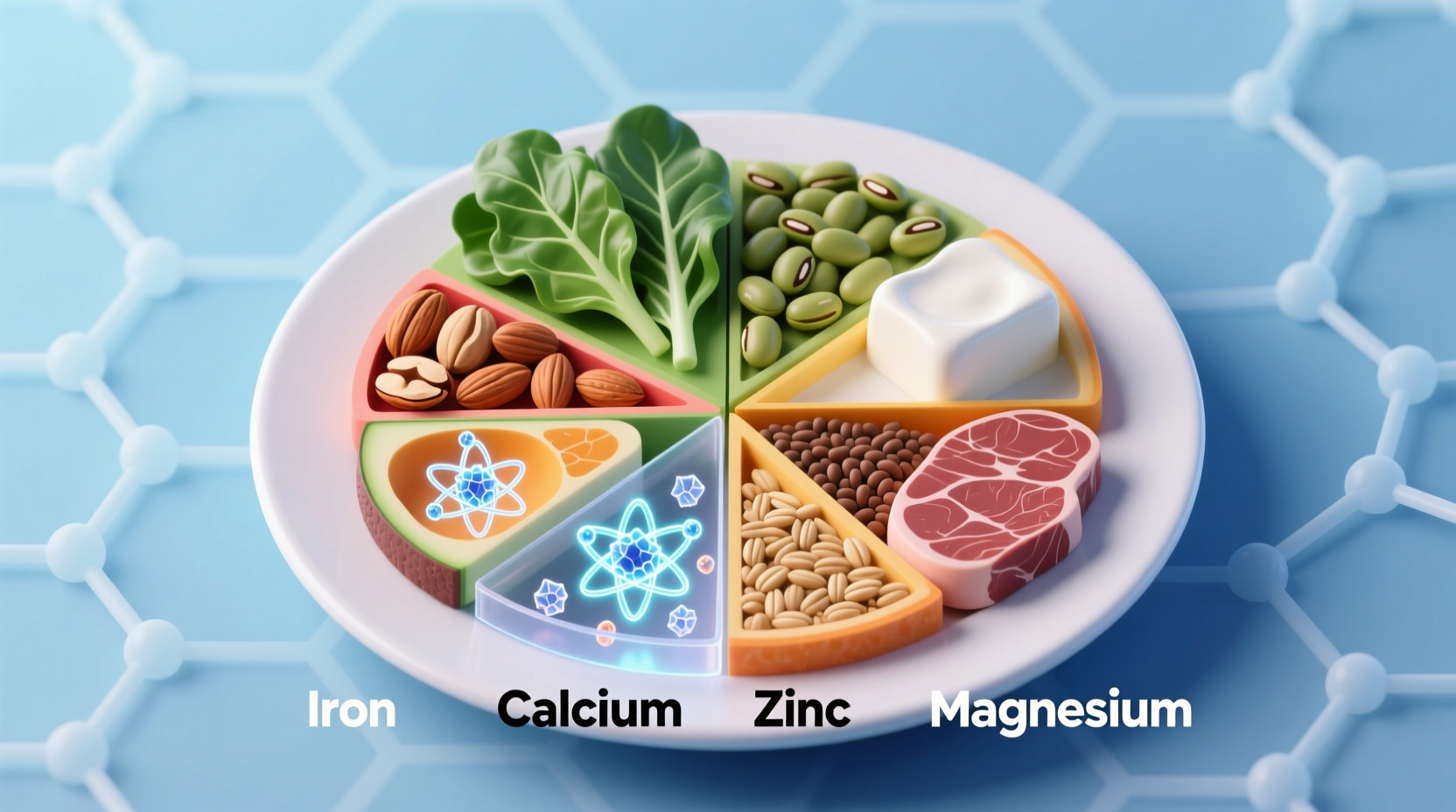Understanding what minerals are in food gives you the power to make informed dietary choices that support bone health, nerve function, metabolism, and overall wellness. This comprehensive guide reveals exactly which minerals matter most, where to find them, and how much you actually need.
Your Complete Guide to Food Minerals
Minerals form the foundation of numerous bodily processes—from building strong bones to converting food into energy. Unlike macronutrients (carbohydrates, proteins, and fats), your body only needs minerals in small amounts, but their absence can trigger serious health consequences. Let's explore exactly what minerals in food do for your body and how to ensure you're getting enough.
Major Minerals: The Body's Essential Building Blocks
Major minerals, also called macrominerals, are required in amounts greater than 100 mg daily. These work tirelessly behind the scenes to maintain your body's critical systems.
| Mineral | Daily Requirement (Adults) | Top Food Sources | Key Functions |
|---|---|---|---|
| Calcium | 1,000-1,200 mg | Dairy products, leafy greens, fortified plant milks | Bone health, muscle function, nerve signaling |
| Potassium | 2,600-3,400 mg | Bananas, potatoes, beans, spinach | Fluid balance, blood pressure regulation, nerve impulses |
| Magnesium | 310-420 mg | Nuts, seeds, whole grains, dark chocolate | Energy production, muscle relaxation, DNA synthesis |
| Sodium | 1,500 mg (ideal) | Naturally in foods, added salt, processed foods | Fluid balance, nerve function, muscle contractions |
This comparison of essential minerals shows how diverse food sources deliver different nutritional benefits. According to the National Institutes of Health Office of Dietary Supplements, most Americans fall short on potassium and magnesium despite their critical roles in cardiovascular health.
Trace Minerals: Small Amounts, Big Impact
Trace minerals (microminerals) are needed in amounts under 100 mg daily but play equally vital roles. Their absorption often depends on other dietary components—a crucial context boundary many overlook.
| Mineral | Daily Requirement | Best Food Pairings | Absorption Tip |
|---|---|---|---|
| Iron | 8-18 mg | Red meat, lentils, spinach | Pair with vitamin C foods (citrus, bell peppers) for 3x better absorption |
| Zinc | 8-11 mg | Oysters, beef, pumpkin seeds | Avoid taking with calcium supplements which inhibit absorption |
| Selenium | 55 mcg | Brazil nuts, seafood, eggs | Just 1-2 Brazil nuts provides 100% daily requirement |
| Iodine | 150 mcg | Seaweed, iodized salt, dairy | Cooking reduces iodine content in vegetables by 20-50% |
The evolution of mineral science reveals how our understanding has deepened over time. Early researchers in the 1920s identified only a handful of essential minerals, while modern science recognizes 16 critical elements. As the National Academy of Sciences documents, research continues to uncover new roles for minerals like chromium in blood sugar regulation.

Maximizing Mineral Absorption from Your Food
Knowing what minerals are in food matters less if your body can't absorb them. Several factors influence mineral bioavailability:
- Food combinations: Vitamin C dramatically increases non-heme iron absorption from plant sources
- Cooking methods: Steaming preserves water-soluble minerals better than boiling
- Dietary inhibitors: Phytates in whole grains can bind minerals, reducing absorption by 20-50%
- Life stage considerations: Pregnant women need 50% more iron, while postmenopausal women require less
A landmark study published in the American Journal of Clinical Nutrition demonstrated that soaking beans for 12 hours before cooking reduces phytate content by 50%, significantly improving zinc and iron absorption.
Recognizing Mineral Deficiencies in Daily Life
Subtle signs often precede serious mineral deficiencies. Watch for these practical indicators:
- White spots on fingernails may indicate zinc deficiency
- Muscle cramps could signal magnesium or potassium insufficiency
- Pale skin and fatigue often accompany iron deficiency
- Frequent bone fractures might point to calcium insufficiency
The USDA's FoodData Central database reveals that leafy greens like spinach provide 24% of your daily magnesium in just one cup cooked, making them an excellent dietary source for this often-missing mineral.
Building a Mineral-Rich Plate: Practical Strategies
Creating mineral-dense meals doesn't require complicated planning. Try these evidence-based approaches:
- Start your day with a smoothie containing spinach (magnesium), banana (potassium), and chia seeds (calcium)
- Include one serving of legumes daily for iron, magnesium, and potassium
- Add nuts and seeds as toppings—they're mineral powerhouses
- Rotate colorful vegetables to cover multiple mineral profiles
- Use iodized salt sparingly if you don't consume seafood regularly
Research from the Academy of Nutrition and Dietetics shows that dietary patterns emphasizing whole foods consistently deliver better mineral profiles than supplement-dependent approaches for most healthy individuals.
When Food Isn't Enough: Special Considerations
Certain situations may require professional guidance:
- Vegetarians and vegans should monitor iron and zinc status
- Older adults often need more vitamin D to absorb calcium
- People with digestive disorders may require specialized approaches
- Heavy exercisers lose significant electrolytes through sweat
Remember that more isn't always better—excessive zinc can interfere with copper absorption, and too much selenium causes toxicity. Always consult a healthcare provider before starting supplements.
Your Mineral-Rich Food Action Plan
Implement these practical steps to optimize your mineral intake:
- Track your food for 3 days using a nutrition app to identify potential gaps
- Incorporate at least three different colored vegetables at dinner
- Replace one processed snack with nuts or seeds daily
- Try one new mineral-rich food each week (like seaweed or pumpkin seeds)
- Consult the USDA's FoodData Central when planning meals
By understanding what minerals are in food and how your body uses them, you gain control over your nutritional foundation. This knowledge empowers you to make food choices that support long-term health rather than just following passing diet trends.











 浙公网安备
33010002000092号
浙公网安备
33010002000092号 浙B2-20120091-4
浙B2-20120091-4